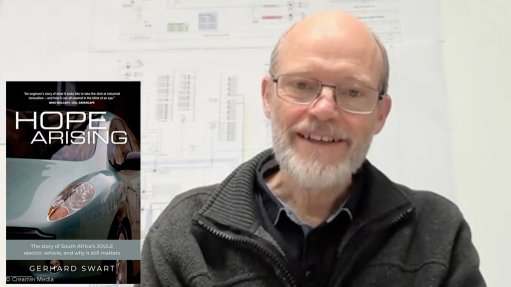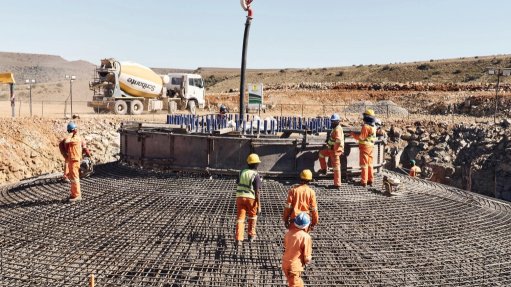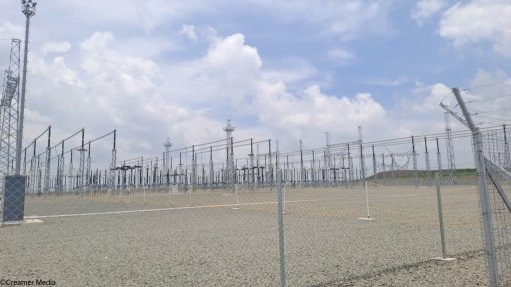Record 585 GW of renewables added in 2024
The ‘Renewable Capacity Statistics 2025’ report released by global organisation the International Renewable Energy Agency (Irena) shows a 585 GW increase in renewable power capacity during 2024, reaching 4 448 GW.
The 585 GW addition in 2024 indicates a 92.5% share of the total capacity expansion and represents a record rate of yearly growth of 15.1%.
While 2024 set a benchmark in renewable-energy capacity and growth, progress still falls short of the 11.2 TW needed to align with the global goal to triple installed renewable-energy capacity by 2030.
To reach this goal, renewable capacity must now expand by 16.6% a year until 2030, Irena says.
However, progress again reflects significant geographic disparities, with most of the increase having occurred in Asia, as in previous years, with the greatest share being contributed by China, which added almost 64% of the global added capacity in 2024, while Central America and the Caribbean contributed the least at only 3.2%.
The G7 countries accounted for 14.3% of additional capacity in 2024 and G20 countries accounted for 90.3% of new capacity in 2024.
Further, solar and wind energy continued to expand the most, jointly accounting for 96.6% of all net renewable additions in 2024. More than three-quarters of the capacity expansion was in solar energy, which increased by 32.2%, reaching 1 865 GW.
Wind energy expansion declined slightly during the year, increasing by 11.1% to reach 1 133 GW capacity by the end of 2024.
Additionally, hydropower capacity, excluding pumped storage hydropower, reached 1 283 GW, demonstrating a notable rebound from 2023, driven by mainly China, while Ethiopia, Indonesia, Nepal, Pakistan, Tanzania and Vietnam added more than 500 MW each.
Bioenergy expansion rebounded in 2024, with an increase of 4.6 GW of capacity, compared with an increase of 3 GW in 2023. The growth was driven by China and France with 1.3 GW of additions each.
Further, geothermal energy increased by 400 MW overall, led by New Zealand, followed by Indonesia, Türkiye and the US.
“The continuous growth of renewables each year is evidence that renewables are economically viable and readily deployable. Each year, they keep breaking their own expansion records, but we also face the same challenges of great regional disparities and the ticking clock as the 2030 deadline is imminent,” says Irena director-general Francesco La Camera.
With economic competitiveness and energy security being increasingly a major global concern today, expanding renewable power capacity at speed means tapping into business opportunities and addressing energy security quickly and sustainably.
“I call on governments to leverage on the next round of [global climate commitments] Nationally Determined Contributions (NDCs 3.0) as an opportunity to outline a clear blueprint of their renewable-energy ambitions, and on the international community to enhance collaborations in support of the ambitions of Global South’s countries,” he adds.
The large net decommissioning of non-renewable power in some regions has contributed to the upward trend of renewables capacity. However, more needs to be done to reach the goal of tripling renewables capacity by 2030 and the Paris Agreement.
Over the past few years, Irena has been pressing for clear, quantifiable renewable capacity targets in NDCs 3.0. To this end, the Agency has been assisting in the enhancement and implementation of its members’ NDCs with a focus on the energy sector through its country engagement, says La Camera.
“Renewable energy is powering down the fossil fuel age. Record-breaking growth is creating jobs, lowering energy bills and cleaning our air. Renewables renew economies. But the shift to clean energy must be faster and fairer, with all countries given the chance to fully benefit from cheap, clean renewable power,” says UN secretary-general António Guterres.
Article Enquiry
Email Article
Save Article
Feedback
To advertise email advertising@creamermedia.co.za or click here
Comments
Announcements
What's On
Subscribe to improve your user experience...
Option 1 (equivalent of R125 a month):
Receive a weekly copy of Creamer Media's Engineering News & Mining Weekly magazine
(print copy for those in South Africa and e-magazine for those outside of South Africa)
Receive daily email newsletters
Access to full search results
Access archive of magazine back copies
Access to Projects in Progress
Access to ONE Research Report of your choice in PDF format
Option 2 (equivalent of R375 a month):
All benefits from Option 1
PLUS
Access to Creamer Media's Research Channel Africa for ALL Research Reports, in PDF format, on various industrial and mining sectors
including Electricity; Water; Energy Transition; Hydrogen; Roads, Rail and Ports; Coal; Gold; Platinum; Battery Metals; etc.
Already a subscriber?
Forgotten your password?
Receive weekly copy of Creamer Media's Engineering News & Mining Weekly magazine (print copy for those in South Africa and e-magazine for those outside of South Africa)
➕
Recieve daily email newsletters
➕
Access to full search results
➕
Access archive of magazine back copies
➕
Access to Projects in Progress
➕
Access to ONE Research Report of your choice in PDF format
RESEARCH CHANNEL AFRICA
R4500 (equivalent of R375 a month)
SUBSCRIBEAll benefits from Option 1
➕
Access to Creamer Media's Research Channel Africa for ALL Research Reports on various industrial and mining sectors, in PDF format, including on:
Electricity
➕
Water
➕
Energy Transition
➕
Hydrogen
➕
Roads, Rail and Ports
➕
Coal
➕
Gold
➕
Platinum
➕
Battery Metals
➕
etc.
Receive all benefits from Option 1 or Option 2 delivered to numerous people at your company
➕
Multiple User names and Passwords for simultaneous log-ins
➕
Intranet integration access to all in your organisation


















